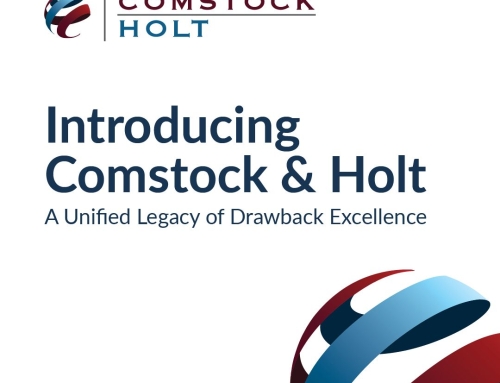CBP has issued a document entitled Interim Guidance for Filing TFTEA Drawback claims, Version 1.1, to be effective during the transition period beginning February 24, 2018. This guidance (IG) will be in force until new regulations are finalized and approved, and addresses both core claims (prepared under existing methodology as per 19 CFR 191) and claims to be filed under TFTEA and the applicable regulations when they are issued. Please note the following highlights:
- There will be a one-year interim transition period from February 24, 2018 until February 23, 2019, during which core drawback claims can still be filed. (see p. 2)
- TFTEA claims can be filed through ACE beginning February 24, 2018 but will not be processed for accelerated payment until Final Rule TFTEA regulations are issued. (see p. 3 and 8) (TFTEA Drawback and Accelerated Payment)
- All existing manufacturing rulings issued under 19 CFR Part 191 must be modified by February 23, 2019 to cover TFTEA claims. (see p. 3, 6 & 7)
- Accelerated payment will continue to be processed on core claims filed during the interim period. (see p. 9) However, it is important to note #1 above, that core claims can only be filed until February 23, 2019
- Claimants previously granted AP privileges under 19 CFR 191 will not have to re-apply for AP on TFTEA claims of the same drawback type (as per 19 U.S.C 1313).
- Claimants approved for AP and/or Waiver of Prior Notice (WPN) for Direct Identification unused merchandise claims under 19 U.S.C. 1313(j)(1) will automatically be approved for those privileges for TFTEA substitution unused merchandise claims under 19 U.S.C 1313(j)(2). (see p. 4, 10 and 11)
- Claimants previously granted WPN privileges under 19 CFR 191 will not have to re-apply for WPN on TFTEA claims of the same drawback type. (see p. 11 and 12)
- Approvals for retroactive one-time waiver (OTW) will extend for the full 5-year statutory timeframe allowed on exportations under TFTEA. (see p. 12) CBP will allow the transmission of claims of imports claimed under both non-TFTEA (core) and TFTEA during the transition period ending February 23, 2019, but the claimant must be able to provide supporting evidence and documentation to substantiate that the import line designated on the TFTEA substitution claim was not previously designated on a non-TFTEA claim. (see p. 13 and 14)
- TFTEA claims must utilize the HTSUS unit of measure reported on the import entry line item. If the reported UOM on the entry line is “X”, the claimant can determine the UOM to use. (see p. 15 and 16)
- TFTEA claims for substitution claims must utilize the Per Unit Average (PUA) for calculating the drawback due. The PUA is the ratio of the total value of imported units on a line item divided by the total quantity of imported units reported on a line item multiplied the quantity of units designated. (see p. 16 and 17)
- TFTEA substitution claims will be subject to the “lessor of” rule, limiting the amount of drawback to be refunded to the lesser of the amount associated with the designated imported merchandise or the substituted merchandise. (see p. 19 through 21)
- Since substitution TFTEA claims must calculate the PUA of a designated import entry line, core claims and substitution TFTEA claims cannot use the same entry line. The first claim that is filed on a specific import entry line will determine the subsequent availability of drawback claim types for merchandise on that line. (First-Filed Rule: see p. 22 through 24)
We strongly encourage you to read this document in its entirety, as the repercussions for the industry are profound. Comstock/Holt will be issuing targeted analysis communications in the coming weeks and will also contact our clients directly to discuss the impact on their programs. Please reach out to us with any questions in the meantime.






